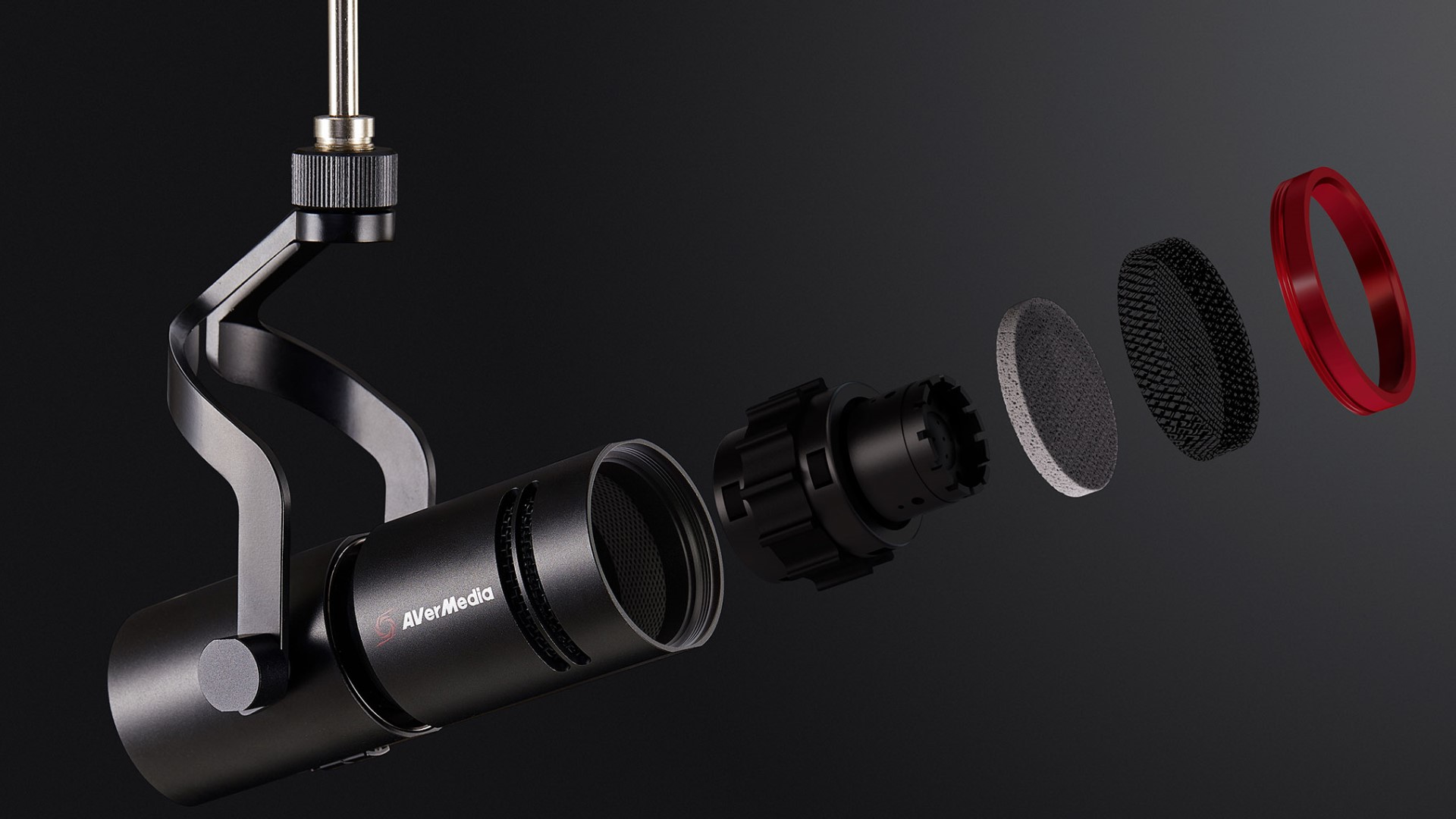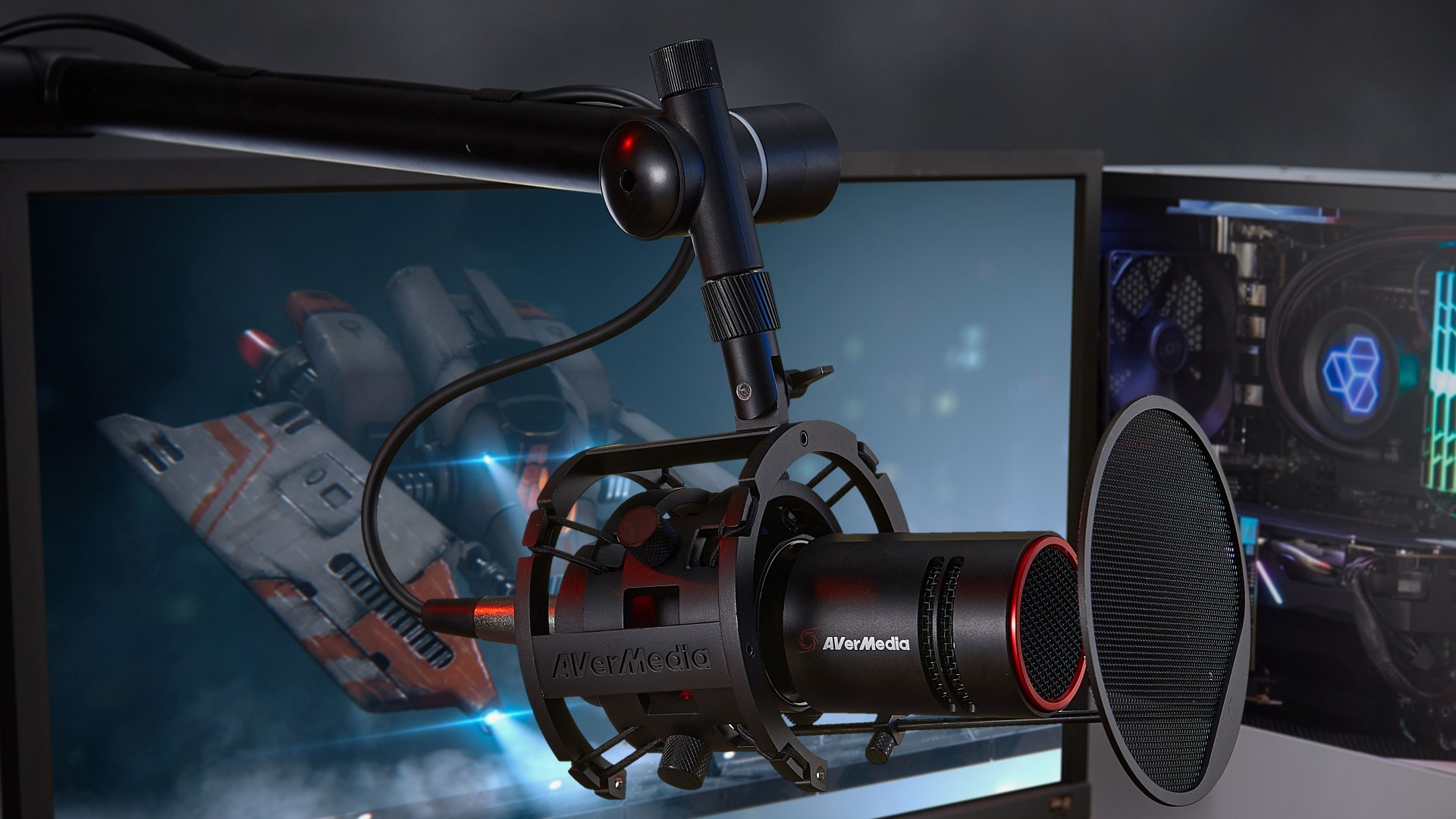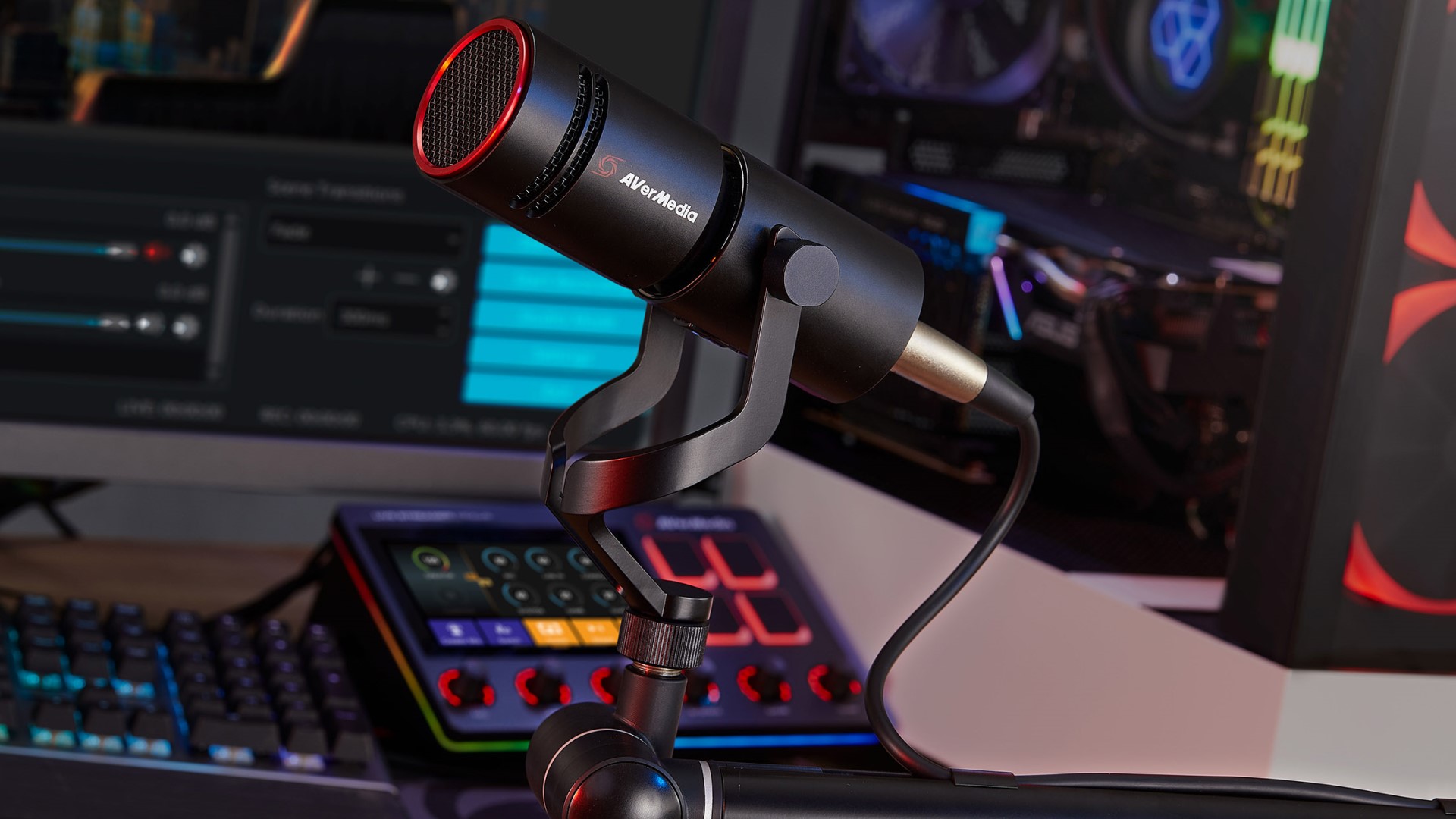GamesRadar+ Verdict
Construction quality for days and a sound quality that exceeds expectations given its narrow frequency response. Not very streamer-focused, though.
Pros
- +
Bomb-proof (probably)
- +
Rich and low-latency audio
Cons
- -
Requires audio interface and boom arm
- -
Not much here specifically for streamers
Why you can trust GamesRadar+
If you strip away all the marketing, there are just two significant differences between the best microphone for streaming contenders like the all-conquering Blue Yeti and a studio mic: connection and latency. It’s the sheer ease of use that makes ‘gaming’ mics so attractive: you plug it into a spare USB slot and it picks up your shrieks while you open FUT packs. End of.
And that has traditionally sidelined XLR mics to the realm of studio, or ‘pro audio’ kit. XLR mics like - and you might want to imagine a dramatic zoom here - the Avermedia Live Streamer Mic 330.
Yes, there’s a bit more setup involved, specifically an audio interface into which you can actually stick an XLR lead, and a boom arm or stand, since there isn’t one provided here. But the payoff it promises is a lower latency, and potentially higher fidelity recording. That opens up the potential usage way beyond Discord bickering and shouting at people to stop playing the bloody hurdy-gurdy in Sea of Thieves; we’re talking broadcast-quality vocals, and amplified or acoustic instrument recording too.
Design & Features
Let’s start by singing the praises of the 330’s construction. Weighing in at 530g, it feels reassuringly sturdy and conveys quality. While we’re not in a hurry to drop it and test out how well protected the membrane is inside that capsule, we’d bet it can certainly survive a few heavy knocks.

Our test setup isn’t anything unobtainable: it’s just a Focusrite audio interface running through Ableton. So there’s an added outlay here for anyone without the prerequisite hardware, which is worth keeping in mind. With only a boom arm mount provided, you’ll also need to shell out for that.
The rest of the streamer kit market might be drowning its mics with RGB, emojis (yes you, Razer streaming gear) and dials, this model has a single control - an on/off slider functioning as a mute control. It’s certainly not noiseless to operate, but that’s partly down to its positioning. You have to reach under the mic body to find it, which produces some rustle. The quality of the switch and circuitry both sounds fine, however, without too much ‘pop’ when you operate the slider.

Performance
Avermedia reckons the grille at the top of the mic capsule is a built-in pop shield, and that partly holds up in practice. Hard plosives are pleasingly compressed (that phrase would make an excellent test, actually) to avoid harsh pop sounds, but serious producers will still want a separate pop shield in order to run the gain a bit higher and get closer without noticeable compression kicking in too severely.
There’s just one polar pattern here, and that’s cardioid, perfect for capturing vocals and punchy instrument sounds and tuning out the room ambience. There’s a ton of detail to the sound too, considering the 50Hz-18KHz frequency response - for reference, the Blue Yeti and many of its USB contemporaries feature a 20-20 sweep, but while the spec sheet says Avermedia’s 330 should lack subharmonic detail at the bass end and perhaps some sparkle between 18-20k, in reality the difference in frequency response is offset by the connection type and the richness that XLR analog audio can offer.

Overall - should you buy it?
The Live Streamer Mic 330’s pricing puts it right in the fight with Blue’s various Yetis and its strongest contenders for the throne. Team it with the best capture card, the best ring light, and the best green screen, and this will be right at home in a streaming setup. The build quality is certainly as good as this reviewer has seen from any of the major players - Beyerdynamic, Blue, Razer, Elgato et al, and the sound has a richness and a low input latency that makes double-tracking and layering audio simple. (Try keeping multiple audio tracks in sync with a click track when you’re recording via USB, by comparison.)
As for whether it’s ideally suited to the needs of a streamer, there’s not much here that overtly nods to that activity and its demands. The aesthetic is very much pro audio, rather than gaming gear, and the relative ease of use it offers by virtue of having just one control on the mic body is offset by the need for an XLR audio interface and a boom arm. Also, pitching itself at around the $100 mark is only half the story, then - it’s not really the same value proposition as a plug-and-play Yeti.
More likely, this is a mic for someone with a foot in both camps. A musician who’s into podcasts; a PUBG prodigy with a music production side hustle. They’re best served by Avermedia’s robust Live Streamer Mic 330. The rest will probably find a USB input’s simplicity the bigger draw.
Phil Iwaniuk is a multi-faceted journalist, video producer, presenter, and reviewer. Specialising in PC hardware and gaming, he's written for publications including PCGamesN, PC Gamer, GamesRadar, The Guardian, Tom's Hardware, TechRadar, Eurogamer, Trusted Reviews, VG247, Yallo, IGN, and Rolling Stone, among others.




